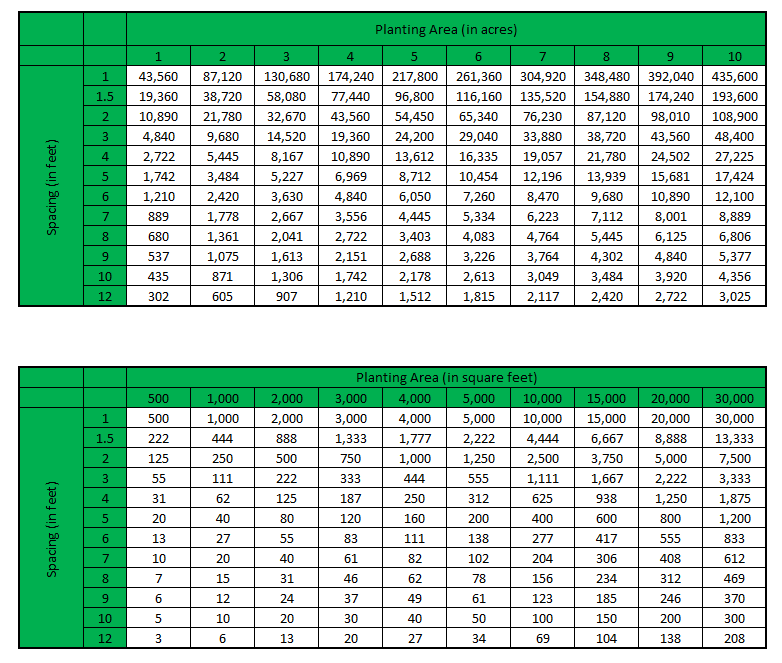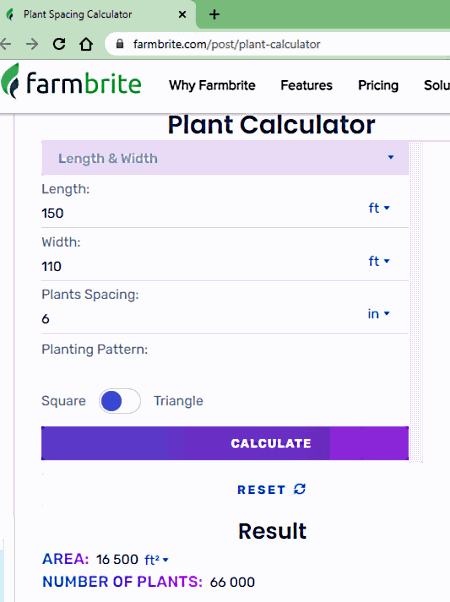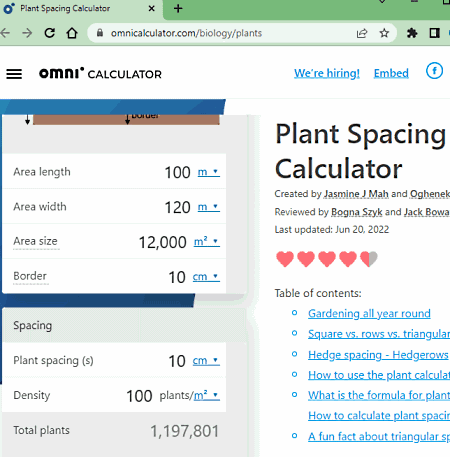Plant Calculator Guide: Easy, Accurate Planning for Your Perfect Garden

The first time I tried to plot out a garden bed, I stood in my backyard clutching a packet of zinnias, utterly baffled. The tag said “space 10 inches apart,” but the patch of earth at my feet looked enormous. Did that mean I needed 10 seeds? Twenty? Fifty? I pictured my grandmother, who never used anything more technical than her thumb and an old kitchen spoon, yet her borders bloomed with precision every June. How did she always get it right?

Fast-forward a decade and hundreds of muddy boots later: I’ve discovered the secret behind those lush gardens and perfectly spaced rows—it’s part knowledge, part intuition, and, these days, a touch of digital magic. If you’re ready to move beyond guesswork into true garden mastery, welcome to the definitive guide on plant calculators: not just what they do, but how to wield them like the pros.
The Plant Calculator—Part Science, Part Story
Before we dig into formulas and tools, let me share this: every thriving garden carries a story in its layout—a tale of experiments gone wrong (and right), lessons from mentors, and clever adjustments made with each passing season.
When you use a plant calculator well, you’re not just crunching numbers; you’re giving your future self—and your plants—the best chance at success.
Why Plant Calculators Matter (More Than You Think)
Let’s be honest: “plant calculator” sounds about as thrilling as “tax spreadsheet.” But here’s why it matters:
I once watched a city park team replant an entire hillside after their first install failed. Turns out someone misread the recommended spacing for native coneflowers—plugging them 8 inches apart instead of 18. Within two seasons it was a tangled mess choked by mildew. The fix cost $4,500 in extra labor and new plants. That’s when they switched to using both online calculators and hand-drawn maps checked by three people.
Plant calculators are your insurance policy against wasted money, crowded roots, or sad bare patches—a blend of horticultural science and practical experience distilled into actionable numbers.
Deconstructing the Plant Calculator: What Actually Goes In
Key Inputs (And Why Each Matters)
-
Area Dimensions: Not just “about six feet”—get precise! A 6’ x 4’ space is 24 square feet; round up or down by even half a foot and you’ll either over-order or wind up short.
-
Mature Plant Spacing: This is where most rookies go astray. Listen closely—not seedling size, but full-grown width/diameter at maturity. Two years ago I crammed dwarf boxwoods two feet apart when they actually needed four—I spent last autumn digging half of them back out!
-
Planting Pattern: Grid (rows) or staggered (triangle)? Triangle patterns allow ~15% more density—perfect for groundcovers or mass plantings where you want fast coverage.
-
Bed Shape & Complexity: Rectangle? Circle? L-shape? For weird curves or nooks around patios—break them into smaller shapes first.
-
Species Mix: Are you planting one species en masse—or mixing heights/colors like a prairie meadow? Each changes how you calculate needs (more on this below).
The Unspoken Variable: Your Patience
Plants fill in over time—sometimes faster than expected! After one ambitious fall planting (157 plugs in an oddly shaped pollinator strip), I worried all winter it would look sparse come spring... By July it was so dense the path vanished under golden coreopsis clouds.

From Tape Measure To Triumph: The Step-By-Step Blueprint
1. Map Before You Math
On my kitchen table lives an ever-growing collection of graph paper sketches and wrinkled garden bed outlines drawn with colored pencils—remnants from every major project since 2015. Nothing beats sketching your area before calculating; it reveals curves and trouble spots no calculator can anticipate alone.
Tip: Mark paths for wheelbarrows/kids/dog zoomies before planning plant placement—you’ll thank yourself during harvest/weeding season!
2. Measure Meticulously
A good friend who runs a landscape crew brings two tape measures—and his youngest son—for big jobs (“kids see angles adults miss,” he says). Always double-check length/width—even for raised beds where wood can bow outward over time.
For circles:
- Radius squared × π = area.
- For triangles/L-shapes: break down into rectangles + triangles; sum areas for total space.
3. Sourcing Spacing Data
If there’s disagreement between seed packet and nursery tag… trust the larger number! Better too much room than too little (especially for shrubs/perennials).
Online sources worth bookmarking:
- Missouri Botanical Garden Plant Finder
- Royal Horticultural Society Database
- Dave’s Garden community reviews
If in doubt—I call my local extension agent (they love troubleshooting real-world issues).
4. Choose Your Layout Pattern Wisely
Once had a client adamant about military-straight rows… until she saw my neighbor’s wildflower patch planted in staggered triangles (“more natural!” she exclaimed). Rows are easier for vegetables/access; triangle grids maximize flower impact.
Quick math:
- For grids: Divide length by spacing = plants per row; same for width = number of rows.
- For triangles/staggered layout: Multiply grid total by ~1.15 for denser coverage.
Example Calculation
Your border is 12’ x 3’. Planning dwarf salvia spaced at 12” intervals.
Rows:
12’/1’ = 12 plants along length
3’/1’ = 3 rows wide
Grid total = 36 plants

For triangle pattern: 36 x 1.15 ≈ 41 plants
Always round down if edges curve inward or obstacles exist!
Avoiding Rookie Mistakes—Because We’ve All Made Them
Overcrowding At Planting Time
The temptation is real! Those tiny pots look lost with correct spacing—but trust me: after three months that bare mulch will disappear beneath lush foliage. My first-ever hosta border? Looked pitiful till summer storms arrived… then exploded into thick green fans almost overnight.
Underestimating Pathways & Access
I once watched an entire crop of strawberries trampled by eager pickers because we forgot to leave enough room between beds during layout…
Forgetting About Growth Rates
In mixed beds don’t ignore who grows fastest! Tall zinnias will shade out alyssum if packed side-by-side without accounting for mature height/spread variance.
Fudging Measurements
Measure twice—plant once! A friend swears by laser tape measures now after his “close enough” approach led him to buy way too many azaleas one spring ($180 extra spent).
Advanced Moves That Separate Enthusiasts From Artists
Multi-Species Mastery
Designers often use cut-out cardboard circles representing each plant’s mature spread—lay these physically on soil before digging holes! It reveals gaps/overlaps calculators miss entirely.
Pro tip from landscape architect Rachel Matheny:
“Lay out largest species first as anchor points; work down to smallest fillers last.”
Succession & Companion Strategies
For vegetable beds:
Plot early crops (radishes) followed by latecomers (beans); recalculate mid-season to maximize output per square foot.
Companion planters use calculators not just linearly but spatially—for example planting basil tightly between tomato vines to shade roots while maximizing yield per row foot.
Tackling Irregular Beds & Slopes
On sloped ground or sinuous borders around patios/pools:
Divide area into rough geometric sections;
Calculate each chunk separately;
Sum totals—but subtract overlap zones where curves meet sharply.
Some digital tools now let you upload photos/dimensions directly onto satellite maps—a game-changer for complex spaces!
Tools Of The Trade—What Pros Actually Use
After testing dozens of apps/sites here’s what consistently works:
| Tool | Best Use | Real-Life Feedback |
|---|---|---|
| Gardeners.com Calculator | Beds/borders | Simple UI; great diagrams |
| Landscape Calculator | Bulk projects/materials | Used by contractors; includes mulch/soil volumes |
| “Garden Planner” app | Mixed/container layouts | Drag-and-drop ease on tablet |
| Excel/Google Sheets custom templates | Large installs/multi-year projects | Lets you tweak variables/costs instantly |
Old-school essentials still matter:
Graph paper + colored pencils for visual thinkers;
Measuring tapes marked at key intervals;
Printable charts taped inside shed doors;
A notebook dedicated solely to past calculations/mistakes/wins (“Garden Logbook #7” sits next to my coffee pot as I write this).
True Stories From Trial And Error
Urban Veggie Patch Gone Right
Clara wanted maximum kale output in her raised bed (5x8'). First attempt: eyeballed ten seedlings per row… only half survived due to crowding disease.
Second season—with calculator + triangle pattern = healthy harvest all summer long; leftover seeds shared with neighbors instead of wasted!
Perennial Pollinator Strip
In our community garden we planned a butterfly corridor using strict calculations plus cardboard circle templates—the result? No dead zones AND less volunteer weeding required since dense cover shaded out weeds quickly.
Schoolyard Restoration
Local elementary tackled pollinator lawn conversion (~0.75 acre): calculated exact plug count per species mix with contingency buffer (+12%).
Final tally matched budget almost exactly—a feat that earned kudos from both grant committee and delighted teachers who got hands-on math lessons outdoors!

Troubleshooting When Things Go Off-Script
“I followed the calculator... why does my garden still look empty?”
Patience! Real-life fill-in takes time—interplant quick-bloom annuals as placeholders if aesthetics matter now.
If parts look packed while others seem deserted:
Check soil dips/slopes that may have skewed actual distances,
Re-measure key stretches,
Don’t be afraid to transplant early on—it happens even on professional jobsites when plans meet reality!
“Calculator says more plants than my wallet allows...”
Switch pattern from triangle back to grid,
Buy fewer/larger specimens,
Prioritize high-impact focal areas,
Round up friends/neighbors for swaps during spring surplus season—you’d be amazed what comes home from local Facebook gardening groups!
Your Definitive Action Plan—for Any Project Size
Here’s how seasoned gardeners take their visions from idea to reality:
- Define Your Area
- Precise measurements beat rough guesses every time.
- Sketch everything—even napkin doodles help!
- Select Plants Intentionally
- Check multiple sources for mature sizes/spacings.
- Consider color/succession/height combos upfront.
- Choose Layout Pattern
- Rows vs triangles based on coverage/access needs.
- Map pathways before filling every inch!
- Calculate With Confidence
- Manual formula OR digital tool—it’s personal preference.
- Double-check results versus your sketch/layout.
- Price & Source Plants
- Local nurseries may offer bulk discounts above certain quantities!
- Prep Soil Thoroughly
- Amend ahead so roots settle happily post-installation.
- Mark Out Actual Spots
- Stakes/flour dots/cardboard circles all work!
- Plant Methodically
- Water well immediately;
Mulch lightly after setting each batch.
- Water well immediately;
- Document Progress
- Take photos at install—and again each season as things fill in!
- Keep notes on what worked best/worst year over year.
- Share & Refine Wisdom Locally
- Join regional forums/social media groups;
Swap stories/plants/mistakes—they become tomorrow’s expertise!
- Join regional forums/social media groups;
Beyond Numbers: Cultivating Wisdom Season After Season
Every calculation is really just another chapter in your personal gardening storybook—a living record written one rootball at a time across sun-soaked mornings and moonlit evenings hauling watering cans.
Bookmark those favorite tools above,
Start small if this feels overwhelming,
Ask questions boldly at nurseries—they genuinely love curious planners!
Mix old-school sketches with digital apps until you hit your own groove,
And remember that getting it slightly wrong isn’t failure—it’s how every gardener becomes wise through weather, whimsy…and recalculated plans next spring!
Just outside my window today stands an exuberant tapestry where years ago there was only grass—and nearly every successful bed started life as numbers scribbled beside coffee mug rings on notepads older than some saplings now shading our patio chairs.
So grab your tape measure and dream big—but measure twice before planting once! Use these strategies not just as formulas but invitations to experiment boldly…because the greatest gardens aren’t built overnight—they’re grown through curiosity paired with calculation year after year.
Bonus Resource:
Free Printable Plant Spacing Chart (.PDF)—hang it inside your tool shed door like generations before us did with almanacs!
When doubt creeps back—as it surely will mid-project or late autumn—remember this guide is always here waiting…like an old friend eager to swap stories beside blooming borders.
Here’s wishing you confident calculations and even happier growing seasons ahead!




